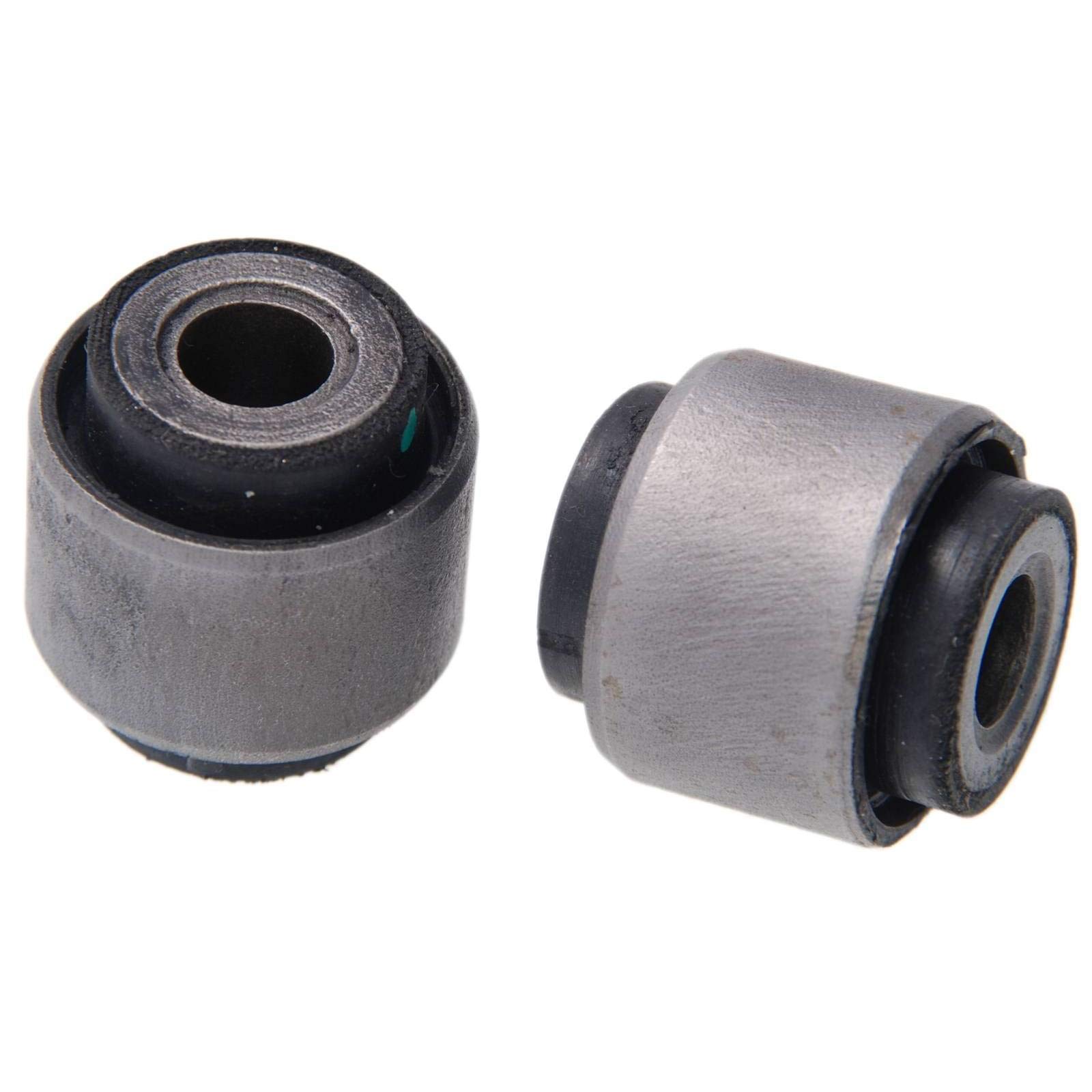-23%
Get Honda Civic CR-V Rear Axle Rod Arm Bush
The axle rod arm bush, also known as the rear axle bushing or control arm bushing, is a critical component in a vehicle’s suspension system. It plays a pivotal role in connecting the axle or rear suspension arms to the vehicle’s chassis or subframe. This bushing is designed to absorb vibrations, reduce noise, and allow controlled movement of the axle or suspension arms during vehicle operation. Here’s an in-depth exploration of the axle rod arm bush, covering its functions, importance, signs of wear or failure, and maintenance considerations.
Functions of Axle Rod Arm Bush
- Support and Attachment: The primary function of the axle rod arm bush is to provide a secure mounting point for the rear axle or suspension arms to the vehicle’s chassis. It allows these components to pivot and move as the suspension reacts to changes in road conditions, while maintaining structural integrity and stability.
- Vibration Dampening: Axle rod arm bushes are designed to absorb and dampen vibrations and shocks generated from the road surface. The rubber or polyurethane material of the bushing acts as a cushion, reducing the transmission of vibrations to the vehicle’s chassis and improving ride comfort for occupants.
- Noise Reduction: Alongside vibration dampening, axle rod arm bushes help in reducing noise from the rear suspension system. By isolating the movement of the axle or suspension arms, they minimize the transmission of suspension-related noise into the vehicle cabin, resulting in a quieter driving experience.
- Allowing Controlled Movement: Axle rod arm bushes facilitate controlled movement of the rear axle or suspension arms during suspension travel. This controlled movement is crucial for maintaining optimal tire contact with the road surface, improving vehicle stability, and enhancing handling and steering response.
- Maintenance of Suspension Geometry: A properly functioning axle rod arm bush helps maintain the correct alignment and geometry of the rear suspension system. It keeps the axle or suspension arms securely attached, preventing excessive movement or misalignment. This alignment stability is essential for ensuring consistent handling, steering response, and tire wear.
Importance of Axle Rod Arm Bush
The axle rod arm bush is crucial for several reasons:
- Safety: It contributes to the overall stability and safety of the vehicle by ensuring that rear suspension components remain securely attached and properly aligned.
- Comfort: By reducing vibrations and noise, the bushing enhances ride comfort for vehicle occupants, especially during long drives or over rough roads.
- Performance: Properly functioning axle rod arm bushes optimize rear suspension performance, allowing for better handling, improved steering response, and enhanced overall vehicle dynamics.
Signs of Worn or Failing Axle Rod Arm Bush
- Increased Noise and Vibration: Worn axle rod arm bushes can lead to increased rear suspension noise, such as clunking, squeaking, or banging sounds, particularly noticeable when driving over bumps or uneven road surfaces. This noise often results from excessive play or movement in the bushing.
- Vibration and Harshness: As the bushing wears out, it may lose its ability to effectively dampen vibrations. This can result in increased vibration felt through the vehicle chassis or steering wheel, particularly at higher speeds or during cornering maneuvers.
- Handling Issues: A failing axle rod arm bush can adversely affect the vehicle’s handling characteristics. You may experience increased body roll during cornering, reduced steering precision, or a loose or vague feeling in the steering wheel. These symptoms indicate compromised rear suspension performance, impacting both safety and driving comfort.
- Uneven Tire Wear: Misalignment caused by worn axle rod arm bushes can lead to uneven tire wear patterns, typically seen as excessive wear on the inner or outer edges of the rear tires. This not only shortens tire lifespan but also affects vehicle stability and fuel efficiency.
- Visible Damage: During routine inspections, check the axle rod arm bush for signs of wear, cracking, tearing, or deformation. Any visible damage indicates that the bushing is compromised and should be replaced promptly to prevent further issues.
Maintenance and Replacement
- Regular Inspection: Include axle rod arm bushes in routine suspension inspections, especially if you notice any signs of wear or performance issues. Early detection of worn bushes allows for timely replacement and prevents potential damage to other rear suspension components.
- Timely Replacement: Replace worn or damaged axle rod arm bushes promptly to restore rear suspension performance and ensure vehicle safety and comfort. Use high-quality OEM or aftermarket bushes designed for your vehicle’s specific make and model to ensure proper fitment and longevity.
- Professional Installation: Consider having a qualified mechanic or automotive technician perform the axle rod arm bush replacement, especially if it requires specialized tools or equipment. Proper installation ensures that the bushing is correctly positioned and secured, maintaining the integrity of the rear suspension system.
- Alignment Check: After replacing axle rod arm bushes, perform a rear wheel alignment to ensure proper suspension geometry. This step optimizes vehicle handling, rear tire wear, and steering response, ensuring a safe and comfortable driving experience.
Follow us on Facebook for more parts.



